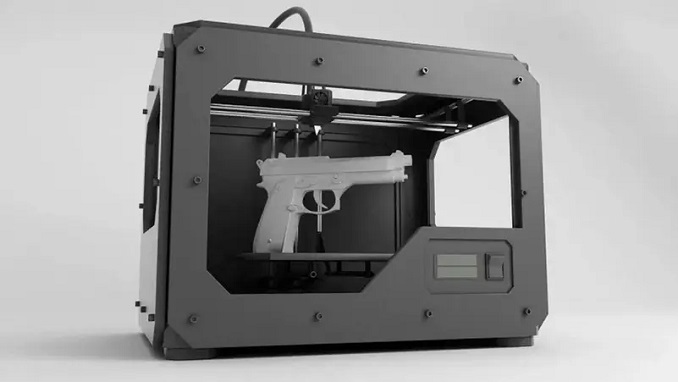
Interpol has issued a warning about the evolution of 3D-printed weapons, saying they pose a “serious threat” if policymakers do not catch up with how quickly the technology is evolving.
Interpol, the global policing body, said the pace of development in the 3D printing industry will likely impact the “sophistication and production” of these weapons.
Currently, the production of 3D-printed weapons is limited to small arms and light weapons.
But it is expected that the capabilities of this technology and the quality of printing materials will evolve, and will lead to more powerful and more sophisticated weapons.
There are already some military weapons with fire potential, Interpol said. And the evolution of printing materials will only lead to more sophisticated weapons being produced with even more threats.
Experts are concerned about how quickly the technology is evolving, and that several countries still have no legal framework that prohibits or limits the creation of weapons by 3D weapons.
If legal measures are not taken to control the production of printers and printing material, the world is facing a serious threat, Interpol said.
Interpol is urging necessary measures in order to stop the potential use of 3D-printed weapons for illegal means.
3D-printed weapons have highlighted a massive issue that manufactured homemade, illegal weapons have become even more accessible.
What exactly are 3D-printed weapons?
Defense expert and Assistant Professor of Terrorism and Political Violence at Leiden University’s Institute of Security and Global Affairs, Yannick Veilleux-Lepage, explained that 3D-printed weapons fall into a broad spectrum.
“They can go from things like the Liberator, which is this single shot, entirely 3D-printed weapon that’s all plastic except for the firing pin and obviously the ammunition which might be able to shoot five to 10 times before it suffers a catastrophic failure, all the way to something called the FGC9, which, if built correctly, is essentially as lethal, as durable, as effective, and as accurate as a commercially purchased firearm.”
Interpol defines 3D-printed weapons into categories of fully 3D-printed firearms, hybrid 3D-printed guns, and firearms whose frame is produced in 3D printing.
Entirely 3D-printed firearms are weapons in which all major components are printed. 3D-printed guns are illegal from the moment of creation because they lack serial numbers and are not submitted to any official test bench.
Because the weapons are not registered or manufactured by licensed professionals, they are not subject to quantitative or qualitative production control.

Be the first to comment